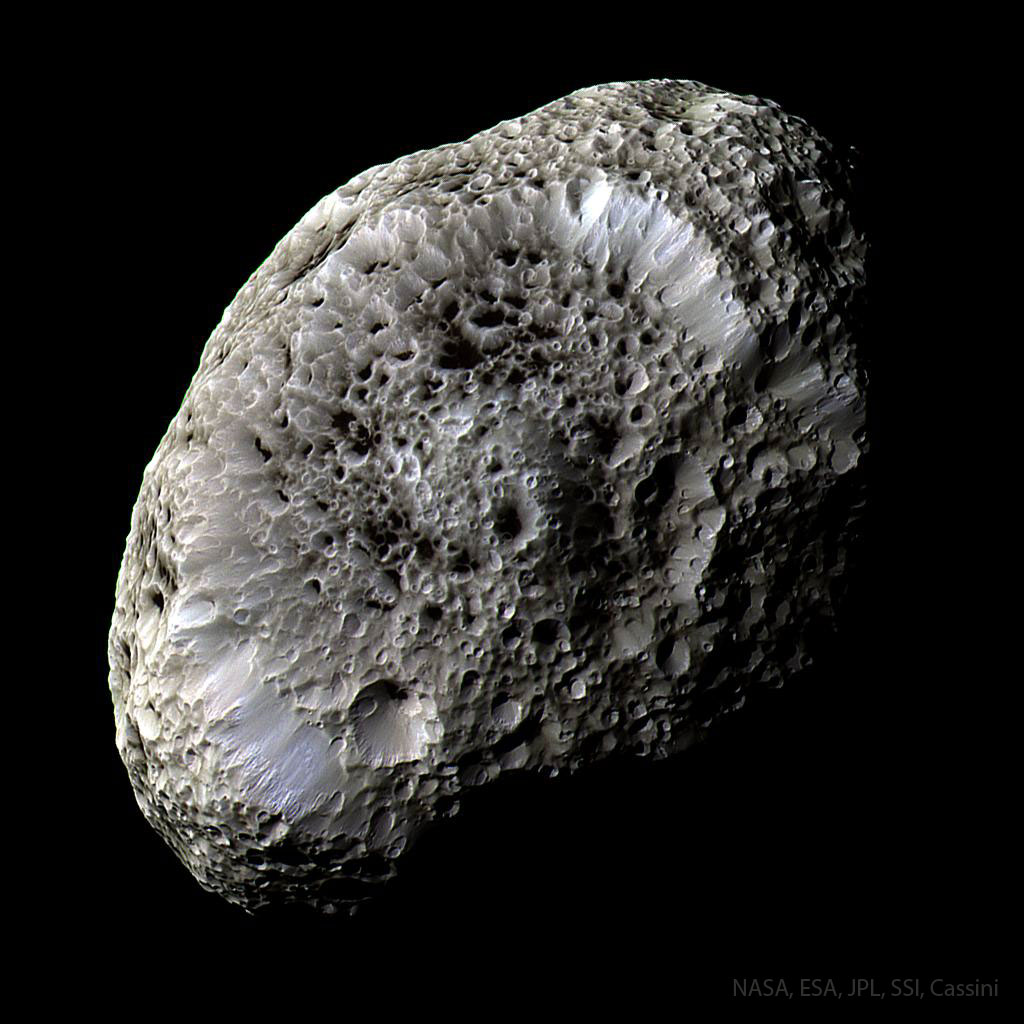2023年3月12日
Saturn’s Hyperion: A Moon with Odd Craters
Image Credit: NASA, ESA, JPL, SSI, Cassini Imaging Team
Explanation: What lies at the bottom of Hyperion’s strange craters? To help find out, the robot Cassini spacecraft that once orbited Saturn swooped past the sponge-textured moon and took images of unprecedented detail. A six-image mosaic from the 2005 pass, featured here in scientifically assigned colors, shows a remarkable world strewn with strange craters and an odd, sponge-like surface. At the bottom of most craters lies some type of unknown dark reddish material. This material appears similar to that covering part of another of Saturn’s moons, Iapetus, and might sink into the ice moon as it better absorbs warming sunlight. Hyperion is about 250 kilometers across, rotates chaotically, and has a density so low that it likely houses a vast system of caverns inside.
Tomorrow’s picture: tree colors
土卫七: 有古老陨石坑的卫星
图像提供: NASA, ESA, JPL, SSI, Cassini Imaging Team
说明: 土卫七(Hyperion)怪异的陨石坑底藏着什么?为了找出这问题的答案,以前曾绕行土星的无人航天器卡西尼号,近距离掠过这颗具有海绵纹理的卫星,并拍下一些前所未见的高解析图像。组合自2005年飞越时拍下的6张照片、并以具有科学意涵的色彩上色的这幅主题图像,清楚呈现了这颗到处都是怪异陨石坑与海棉状表面的古老天体。在大多数陨石坑的底部,则藏着某种成份不明的暗红色物质。这些物质看来和覆盖另一颗土星卫星——土卫八(Iapetus)部分表面的物质相似,而或许是这种物质吸收致热阳光的效率较高,所以才沉入这颗冰卫星。土卫七的大小约为250公里,自转周期混乱,而且密度很低,所以内部可能藏着广大的洞穴系统。
明日的图片: tree colors







